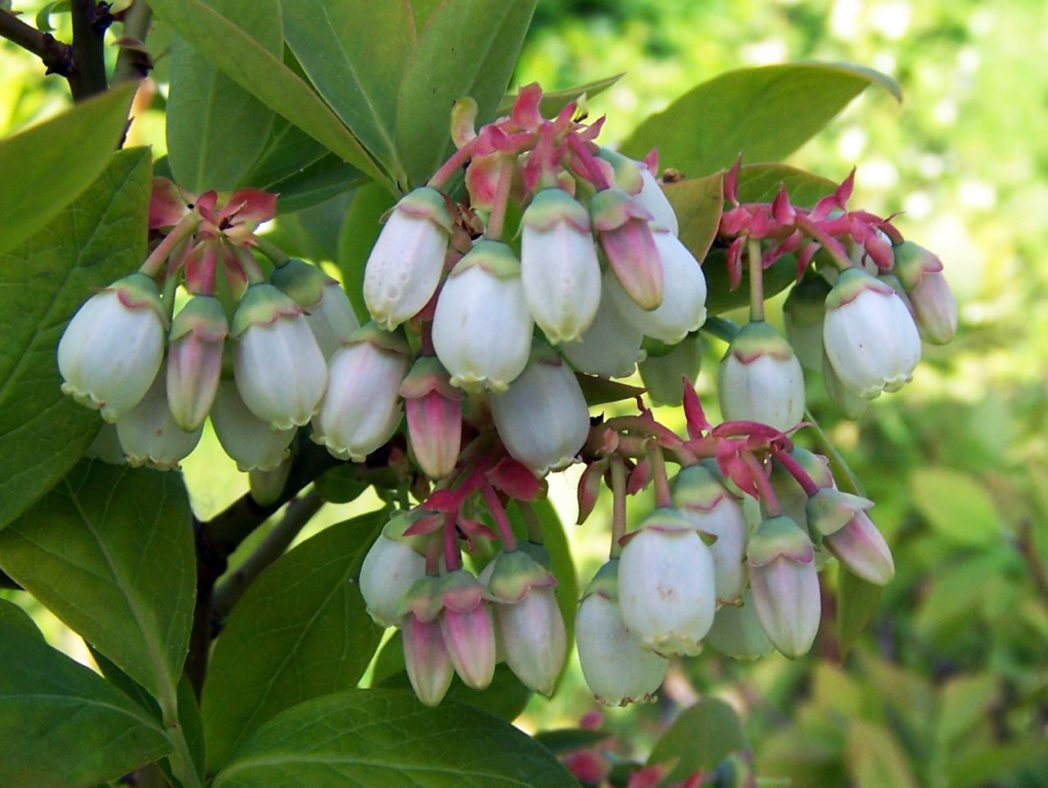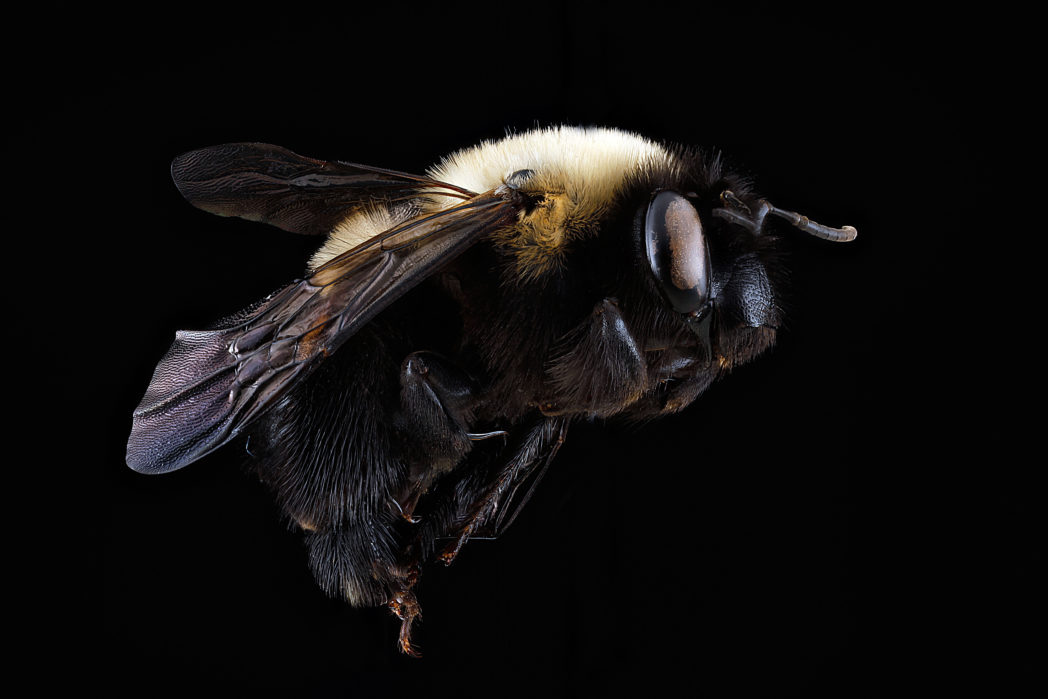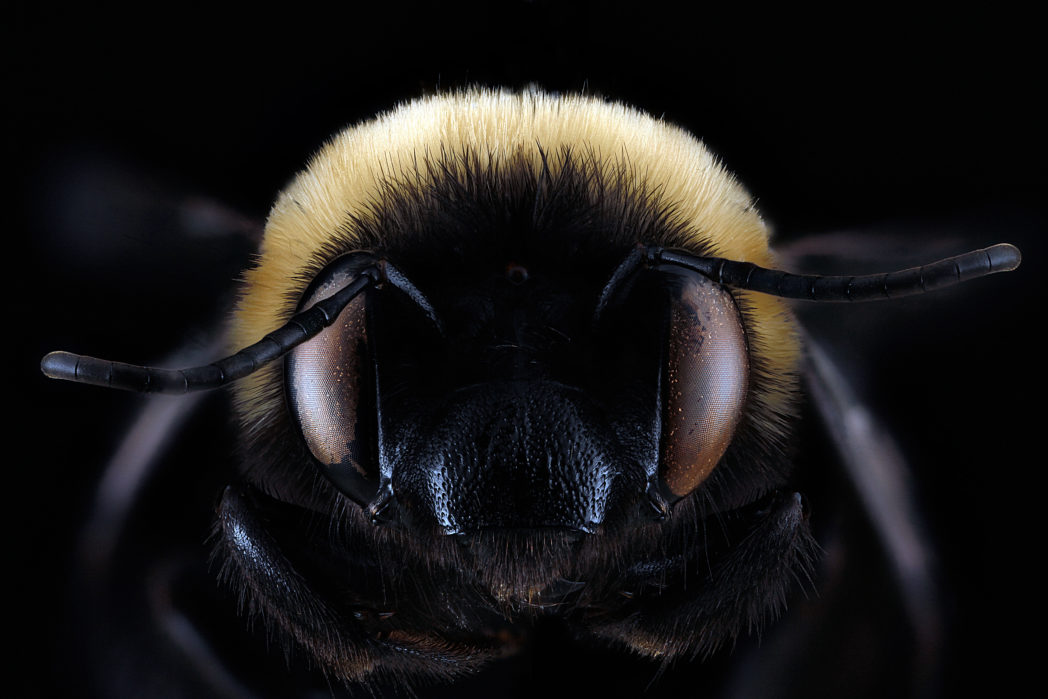Southeastern blueberry bees
by Jonnie Dietz, Florida Museum of Natural History
“Know your native pollinators” is a series of articles that will help you identify and appreciate Florida’s varied pollinators, including bees, wasps, butterflies, moths, beetles, flies, birds and bats. Pictured above: Habropoda laboriosa. You can tell this is a female blueberry bee because she’s missing the yellow face patch distinctive of her male counterparts. Photo courtesy of USGS Native Bee Inventory and Monitoring Laboratory
Southeastern blueberry bees are our most efficient blueberry pollinators, but they are only active for a short period of time in early spring!
CLASSIFICATION
Class: Insecta
Order: Hymenoptera
Family: Apidae
Subfamily: Apinae
Tribe: Anthophorini
Genus species: Habropoda laboriosa
FORAGING PREFERENCES
Although this species will nectar on a variety of spring flowers like Eastern redbud (Cercis canadensis), Viburnum spp., Azalea (Rhododendron spp.) and clover (Fabaceae family), they specialize on:
- Blueberry (Vaccinium spp.)
- Trumpetflower (Gelsemium spp.)

Tubular blueberry (Vaccinium sp.) flowers. Photo by Opioła Jerzy (Poland), CC-BY-SA-3.0 via Wikimedia Commons.
IDENTIFICATION
The Southeastern blueberry bee (Habropoda laboriosa) is most active from February through April. They primarily forage on blueberries (Vaccinium spp.) and conveniently emerge just before the plants begin to flower, resulting is significantly higher yields.
Blueberry bees resemble a small bumble bee, are strong fliers, and do very well in cool weather. By vibrating their wing muscles, they can warm up and fly before temperatures even reach 60 degrees.
DID YOU KNOW?

A hairy female blueberry bee (Habropoda laboriosa). Photo courtesy of USGS Native Bee Inventory and Monitoring Laboratory
These bees are masters of blueberry pollination (yep, even better than honey bees). They’re fast, efficient and perfectly adapted to pollinate both native blueberries and commercial blueberry crops.
Blueberry pollen is heavy, sticky and tucked safely away inside long, tubular flowers. But determined blueberry bees attach themselves to the flowers and vibrate their flight muscles to shake the stubborn pollen loose. Pollen attaches to their hairy bodies and is transferred to subsequent flowers in the bee’s quest for additional nectar and pollen.
Be sure to thank these hard workers in advance, because by the time your berries are ripe and ready, blueberry bees are no longer around.
LIFE CYCLE
Blueberry bees are solitary ground nesters, but often nest in large aggregations. They prefer to nest in sandy soils in sunny, open areas.
Females dig an entrance tunnel into the soil and create individual nest cells off the main tunnel. She lines the cell walls with a waterproof coating and provisions each one with a mass of nectar and blueberry pollen. A single egg is laid on each pollen mass, and she seals the main tunnel shut.
Come spring, adult males emerge before females and anxiously await their female counterparts. Males patrol nest aggregation sites, especially in the mornings when females are most likely to emerge. Some males are so anxious to beat out their competition that they dig into the sand to meet a females climbing out of their nests.
References:
- Cane, J.H. (1997). “Lifetime Monetary Value of Individual Pollinators: The Bee Habropoda laboriosa at Rabbiteye Blueberry (Vaccinium ashei reade).” Acta Hortic. 446, 67-70
DOI: 10.17660/ActaHortic.1997.446.8 - Cane, James H. “Nesting Biology and Mating Behavior of the Southeastern Blueberry Bee, Habropoda Laboriosa (Hymenoptera: Apoidea).” Journal of the Kansas Entomological Society, vol. 67, no. 3, 1994, pp. 236–241. JSTOR, www.jstor.org/stable/25085519.
- The Bees of Florida. John B. Pascarella, Ph.D., Dean of the College of Sciences, Professor of Biological Sciences, Sam Houston State University, Huntsville, Texas. http://entnemdept.ufl.edu/HallG/Melitto/Intro.htm
- Michener, Charles D. The Bees of the World. Baltimore: Johns Hopkins U Press, 2010. Print.
- “Florida’s Native Bees.” Jaime Pawelek. http://www.floridasnativebees.com
- Mitchell, Theodore B. Bees of the Eastern United States, Volume 2. Raleigh, NC: Published by the North Carolina Agricultural Experiment Station with Support from the National Science Foundation, 1962. Print.
- Wilson, Joseph S., and Olivia Messinger Carril. The bees in your backyard: a guide to North America’s bees. Princeton: Princeton U Press, 2016. Print.
- The Xerces Society. Attracting Native Pollinators: The Xerces Society Guide to Conserving North American Bees and Butterflies and Their Habitat. North Adams, MA: Storey Pub., 2011. Print.

